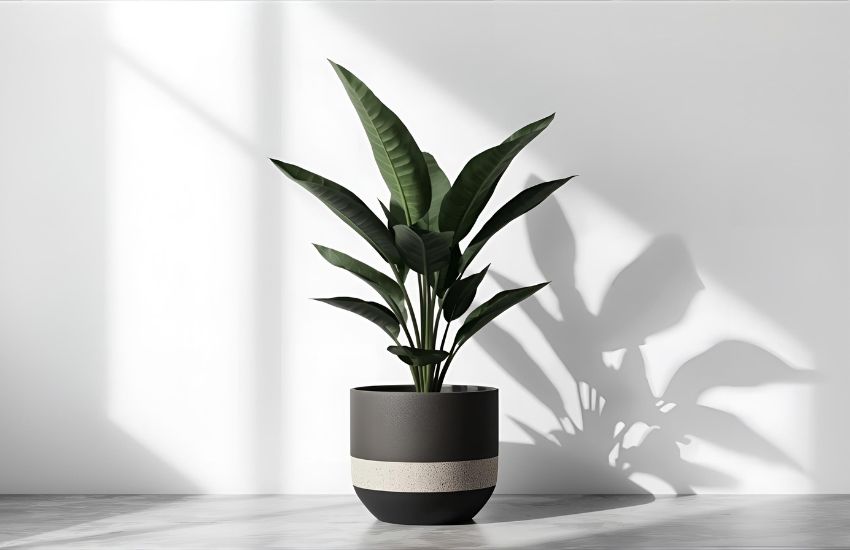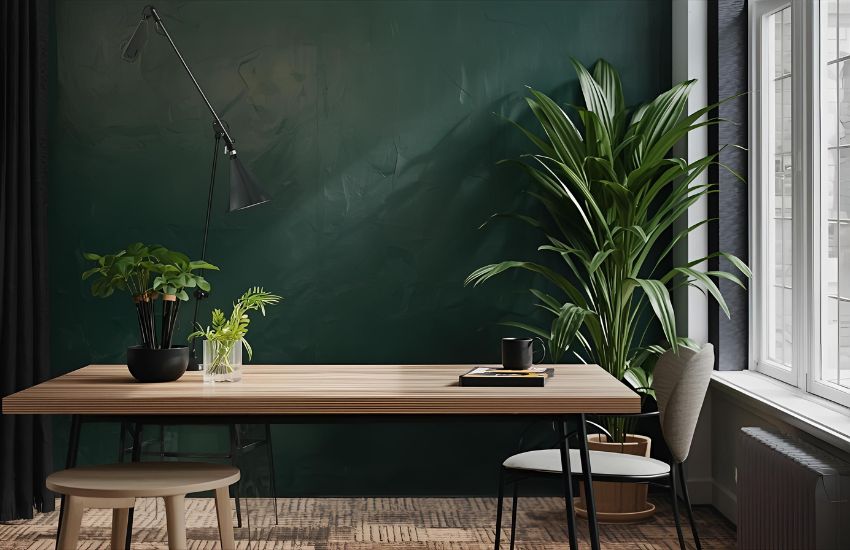If you seek a statement piece that blends sophistication with minimal care, the Zamia ZZ Black Plant, also known as raven zz or zamioculcas zamiifolia, is your ideal choice. Its deep, almost black foliage and glossy leaflets make it a standout houseplant for modern interiors, offering a striking contrast against any décor. What truly sets this plant apart is its ability to thrive with little attention — even in low light conditions and infrequent waterings.
The Zamia ZZ Black Plant adds a modern twist to indoor green elegance with its glossy, deep-black leaves and sculptural form. This low-maintenance plant thrives in low light and needs minimal watering. Perfect for modern interiors, it enhances your space with style and sophistication while purifying the air effortlessly.
In this blog post, you’ll discover how to nurture your raven zz from potting mix to pest prevention — ensuring it continues to grow, thrive, and elevate your indoor space with timeless elegance.
ZZ Plant Varieties and Cultivars to Enhance Indoor Green Elegance

Among the most captivating members of the zamia family, the ZZ plant varieties and cultivars offer remarkable diversity for your indoor collection. Each cultivar showcases its unique hue, texture, and growth pattern, bringing both beauty and resilience to modern interiors. The classic zz plant, native to eastern Africa, features graceful stems lined with dark green leaflets that naturally tolerate low light and low light conditions, making it ideal for homes and offices where natural light is limited.
The raven zz plant, however, takes elegance to another level. Its young bright lime green leaves black as they mature, developing into an almost black tone with purple-black sheen that radiates understated luxury. Perfect for minimalist or contemporary décor, this variety of zz adds depth and contrast while remaining easy to grow and easy to care. It thrives in medium to bright indirect light but can also tolerate low illumination.
For proper black zz plant care, allow the soil to dry completely before watering — these plants prefer to dry out between waterings, particularly during the winter months when growth slows. When you repot, choose well-draining soil and use a balanced fertilizer during spring and summer to encourage healthy growth. Belonging to the araceae family, these plants are toxic to pets, so keep them out of reach of curious animals.
Black Zamia ZZ Plant Care Guide: Soil Mix, Repot, and Thrive Tips

The Black Zamia ZZ Plant is more than just a visual statement; it’s a foliage plant known for its resilience and low-maintenance nature. Its sleek, dark color leaves bring sophistication to your indoor garden, and with the right care routine, it will continue to tolerate low light conditions and thrive effortlessly for years.
Choosing the Ideal Soil Mix
To ensure your plant stays healthy, use a well-draining soil mix that prevents moisture buildup around the roots. A blend of potting soil, perlite, and coarse sand works best, allowing proper airflow. Poor drainage can lead to a sign of overwatering, which causes yellowing and root decay. Always ensure there’s enough space around the edge of the pot for air circulation and healthy root expansion.
When and How to Repot Your Plant
You should repot your plant once every 2–3 years or when the roots begin pressing against the edge of the pot. When you repot, gently loosen the root ball and remove any damaged roots. This process encourages steady growth and prevents overcrowding. After repotting, water sparingly and allow the plant to adjust before resuming your regular watering schedule.
Watering and Light Requirements
This plant can easily tolerate low light conditions and even lower light areas, making it perfect for offices and shaded corners. Water only every 2–3 weeks, letting the soil dry completely between waterings. Excess moisture is the primary sign of overwatering, so moderation is key.
Cleaning and Humidity Care
Wipe the leaves occasionally with a damp cloth to remove dust and restore their natural sheen. This not only enhances their appearance but also allows better photosynthesis. Maintain moderate humidity levels, as overly dry air can cause browning at the tips.
Pest and Maintenance Tips
While this foliage plant is quite hardy, keep an eye out for common houseplant pests such as spider mites or mealybugs. Inspect the plant regularly and treat infestations promptly with insecticidal soap or neem oil. With consistent attention and care, your Black Zamia ZZ Plant will remain a striking centerpiece in your indoor garden, radiating calm elegance and natural beauty.
Conclusion
In conclusion, the Black Zamia ZZ Plant stands out as a timeless beauty that perfectly combines elegance with endurance. Its slow growth rate and ability to withstand lack of water make it an ideal choice for anyone seeking a low-maintenance yet stunning foliage plant. To keep it thriving, always check that the soil feels dry before watering and allow the soil between waterings to stay allowed to dry completely. Doing so will help prevent root rot and support long-term plant health.
For propagation, this hardy plant can be easily propagated by division when you divide the rhizomes during repotting. Naturally resistant to pests, it maintains its lush appearance with minimal effort when you water less frequently and provide suitable conditions.
Bring home this resilient beauty today and elevate your indoor space with its dark, sophisticated charm—start your own Black Zamia ZZ collection and experience how effortlessly it can thrive under your care.
Frequently Asked Questions (Zamia ZZ Black Plant: A Modern Twist on Indoor Green Elegance )
What is the price of ZZ plant in Pakistan?
The price of a ZZ plant (Zamioculcas zamiifolia) in Pakistan varies based on size and presentation. Local variants typically range from Rs. 1,999 to Rs. 3,900, while imported or specialty varieties can cost between Rs. 3,500 and Rs. 8,580.
What is a ZZ plant good for?
The ZZ plant is excellent for improving indoor air quality by removing toxins like xylene, toluene, and benzene. It’s low-maintenance, drought-tolerant, and perfect for offices or homes. Its glossy leaves add aesthetic appeal, creating a calming, stylish environment while requiring minimal care and attention.
Is zamia plant lucky?
Yes, the Zamia plant is considered a lucky plant in many cultures. It symbolizes prosperity, positive energy, and good fortune. Placing it indoors or in offices is believed to attract wealth and success. Its low-maintenance nature also makes it a popular choice for enhancing positive vibes at home.
Is zamia a good houseplant?
Yes, Zamia, also known as ZZ plant or Zamia furfuracea, is an excellent houseplant. It is low-maintenance, tolerates low light, and requires minimal watering. Its unique, glossy leaves add elegance to indoor spaces, making it ideal for beginners and busy individuals seeking a resilient, attractive plant.
